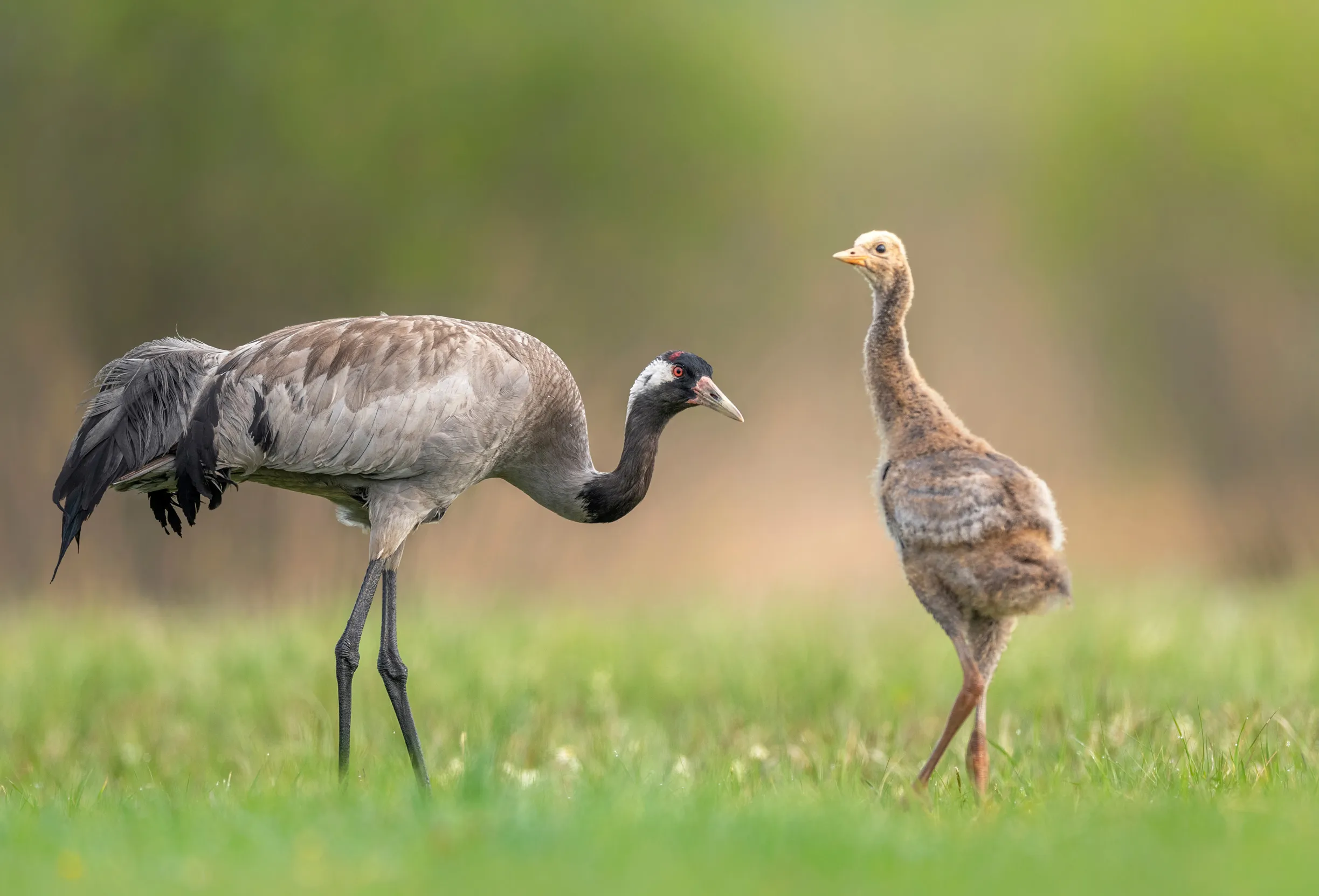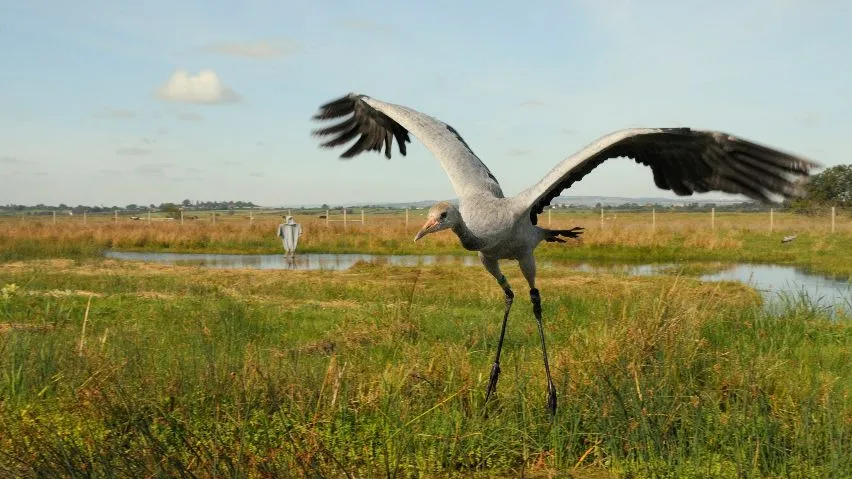Spy on cranes
In a swampy wilderness in eastern England, a secretive family of cranes strides into view. The UK’s tallest bird is surprisingly good at keeping out of sight. But thanks to digital surveillance, a team of nature savers are learning more about these rare birds, which are slowly making a comeback.

On this page
A hidden wilderness
Sutton Fen in the Norfolk Broads is a land where humans rarely tread, cut off from the nearby arable fields by hidden bogs and slow-moving swamps. This water world is home to some of the UK’s rarest animals and plants. Bitterns, Marsh Harriers, Water Voles, and Otters all live here, alongside Swallowtail Butterflies, Norfolk Hawker Dragonflies and one of our rarest plants, the Fen Orchid.
Warden Ben Lewis knows all too well it’s a place to mind your step. He said: “It’s a really dangerous habitat with deep, wet squelchy peat that you can quite easily go up to your armpits in without any notice.”
Cranes return
It is these conditions which make it the ideal place for cranes to thrive and they returned here to breed in 2018. These long-legged birds are increasing in the UK, 400 years after they became extinct. Wetlands are their preferred habitat and last year 71 breeding pairs were counted in the UK, raising 39 young.

Out of sight
Their increase in numbers doesn’t make it easier to see one. For the most part Cranes go unnoticed, shadows silently striding amongst the reeds.
Ben said: “Last year I saw cranes twice with my own eyes, the whole time they were here between April and the beginning of August. I saw one crane circling on one occasion and then another a separate time. That was it.
“It gives you an indication that for such a big bird, they’re so secretive and if they hear you coming, they just vanish.”
Species superhighway
But a camera positioned on a thin narrow land bridge in the reserve gave the team an opportunity to find out more about these amazing birds… and a few other creatures.
Ben said: “The bridge is important to a wide range of animals because it is so boggy elsewhere in the reserve. We’ve seen Red Deer, Otters, Brown Hares, Weasels, Stoats, Squirrels and Foxes all making use of it.”

Time for dinner
In 2022 the camera captured a family of three cranes, two adults and a chick. They were using the bridge to leave the fen to visit the nearby arable fields to feed. This in itself was great for the team to know.
Ben said: “It’s changed my perception of them. It has certainly shown how important that link is between the arable and the fen. They go there to feed on the invertebrates, and it has increased my knowledge of how important it is to have that juxtaposition of habitats.
Learning to fly
The family used the bridge regularly, with the cameras showing intimate moments of family life, including a standoff with a red deer. One moment in particular caused a stir, revealing that cranes begin teaching their young to fly at a really young age.
Ben said: “I think that bit of footage really surprised some people because of how young the chick was when the adult started showing it how to flap its wings. We have shared this footage with colleagues, experts in the field, and they have been completely taken aback by what they have seen because we just didn’t know they do this sort of thing so early.”

Fox attack
As well as the video, the team also use audio to monitor the cranes, with the tech providing proof that the crane’s first nest was unsuccessful.
Ben said: “It almost certainly got attacked by a Fox and we know this because the audio equipment recorded 63 crane calls at 2:30 in the morning over an extended period, which doesn’t normally happen. Again, it shows how much insight we can get using technology which would have otherwise been missed.”
More hidden Cranes?
Without the camera the team may not have known the pair had raised a chick at all. Ben said: “Had the camera not been there, we might have put this down as a possible nest or possible breeding attempt because after the Fox attack we had no other proof that they successfully nested again. It does make you wonder whether Cranes might be in other suitable places, but without the cameras we just don’t know it.”
Window into their world
For Ben, the camera trap is an ideal solution to finding out more about these incredible birds.
He said: “It’s a perfect monitoring tool, where you’re not disturbing the birds. In days gone by I would’ve had to set a little hide up there and stayed in it all day to see if we had anything. That’s what wardens of old would’ve done – so yeah, sticking a camera up, brilliant, fantastic.
He added: “You still have to go through thousands of pieces of footage because the camera catches so many things, even a blade of grass moving. But it’s worth it to witness something so interesting and unique.
“We’re definitely putting the camera back there this summer that’s for sure."